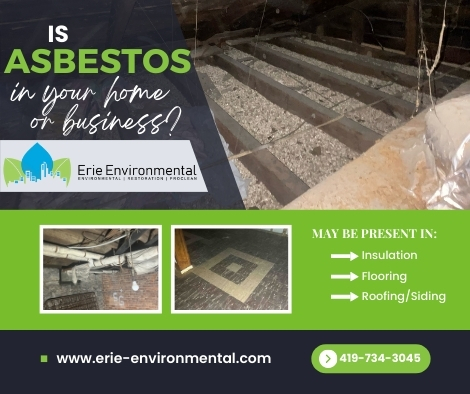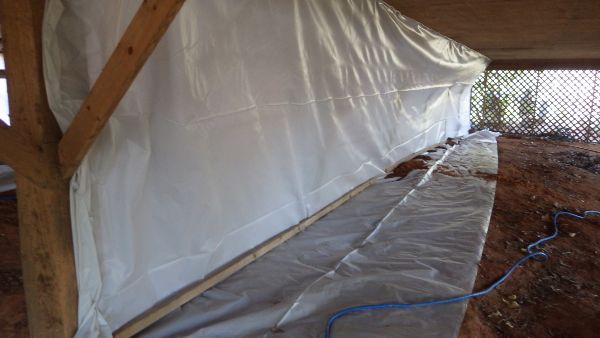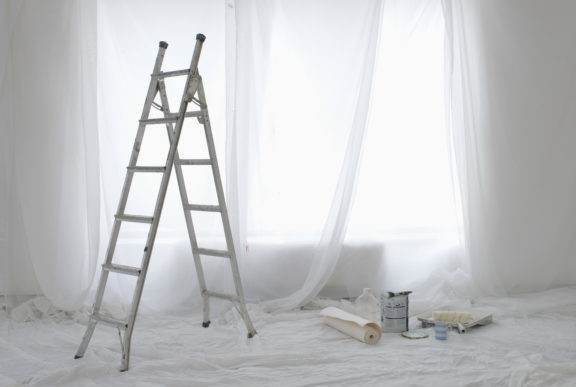Asbestos Removal
Your licensed asbestos removal company servicing Toledo OH, Sandusky, OH, and surrounding areas.
Free Asbestos Removal Estimate

Safety Guaranteed
Every member of our team works in strict accordance with health and safety regulations.

Licensed & Insured
Each technician is certified under applicable asbestos removal training, and proper insurance.

Cleaning and Repairs
Services include thorough cleaning of the abatement site, proper disposal of materials, and repairs.
Your Local Asbestos Removal Company
Asbestos used to be a wonder material excessively used for the production of construction materials. Now, when negative health effects of asbestos are well known, people are seeking to remove hazardous material from homes, businesses, and institutions. Additionally, an asbestos survey is needed when a renovation or a demolition is planned, as harmful airborne particles from broken asbestos-containing materials may contaminate the entire surrounding area.
Erie Environmental provides OSHA – and NESHAPS – compliant, AHERA-certified asbestos testing and removal services for residential and commercial buildings, industrial sites, municipalities, schools, and colleges. During removal, we make the asbestos abatement area fully contained and strictly follow all safety guidelines so that occupants do not even have to move out during asbestos removal.

Asbestos Hazards in Sandusky & Toledo OH
As a profssional asbestos abatement company, Erie Environmental has come to recognize the many common types of asbestos materials in the Sandusky and Toledo Ohio areas. Here, it is most common to find asbestos in the following:
Asbestos Floor Tiles - 9x9" or 12x12" - and Mastic
Asbestos Pipe Insulation
Asbestos Seam Tape on Ductwork
Vermiculite Attic Insulation
Transite Siding
Transite Shingles
Asbestos abatement Process

Asbestos Testing
If demolition is planned, asbestos removal experts need to test building materials throughout the building first. In the case of remodeling or renovation, only materials that are likely to be disturbed should be tested. Professionals will carefully cut samples of potentially asbestos-containing materials (ACMs) and transport them in sealed plastic packets to a dedicated laboratory.

Setting Up a Regulated Work Area
The abatement process should begin if asbestos has been detected. It begins with the containment of the working area. Experts will seal the area with thick plastic sheets and put appropriate warning signs. During asbestos removal, HVAC systems should be disabled to prevent asbestos particles from escaping into other areas of the building.

Removal of Materials
Then, technicians remove asbestos-containing materials using hand tools, place them into asbestos disposal waste bags, and dispose of them following the regional guidelines. Technicians performing asbestos abatement should wear full-face mask respirator and abatement suits that are bagged and sealed after work and disposed of together with asbestos waste.

Cleaning of the Site
When hazardous materials are removed, technicians clean all surfaces in the contained working area with wet wipes and remove any lingering asbestos particles from the air with the help of powerful HEPA vacuums.
Our company will perform final air testing at the request and expense of the owner to confirm the effectiveness of asbestos removal.
Erie Environmental can do all the necessary asbestos repairs replacing the removed materials with new safe alternatives.
Friable vs Non-Friable Asbestos
Friability refers to the tendency of asbestos-containing materials to break down, crumble and reduce to powder. Friability depends on the concentration of asbestos fibers in the material: high concentration makes materials more friable and, thus, more harmful to health. Aging and deterioration of the state of materials gradually make them more friable.

Friable Asbestos
Friable or ‘non-bonded’ asbestos can be easily damaged even by hand. The examples of it are insulation boards, pipe lagging, thermal insulation, sprayed coating. These materials contain more than 15% (in some cases 100%) of asbestos.

Non-friable asbestos
Non-friable or ‘bonded’ asbestos is less likely to release dangerous fibers. Non-friable asbestos materials are solid, rigid and more resistant to damage and abrasion. The examples of non-friable asbestos include cement sheets, vinyl floor tiles, decorated coatings.
We Remove Any Materials Containing Asbestos
Caulking
Roof Shingles/Felt
Floor Tile & Mastic
Cement Sheeting
Transite Panels
Drywall
Vermiculite Insulation
Siding
Pipe Insulation
Ductwork Seam Tape
Textured Popcorn Ceiling Tiles
Plasters























